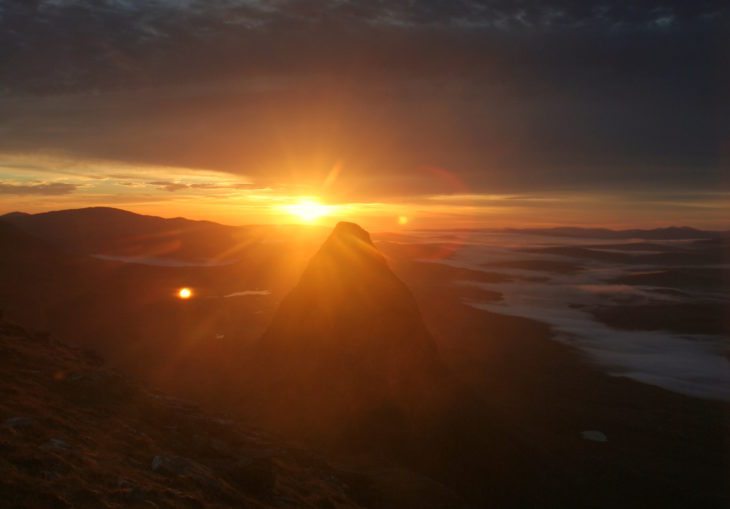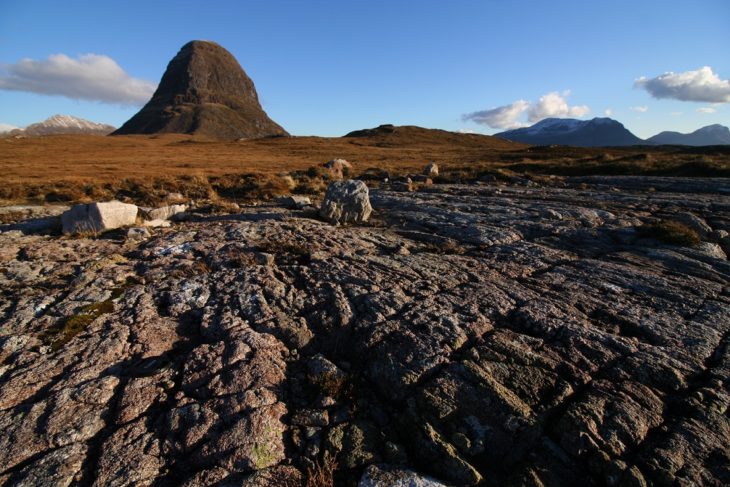On Age
,
Guest blog by Mandy Haggith, Director of Assynt Foundation.
In Assynt we are very proud that our mountain, Suilven, has a starring role in a new feature film, Edie, the main character of which is an 80-something woman played by Sheila Hancock. In a lovely interview in the Herald (see here) she makes out that this is a somewhat senior age to be trotting up mountains, but compared to the ancient rocks under her feet, it’s nothing.
In my long poem about Suilven, I wrote:
‘The mountain appears ancient this morning
but this is an illusion
caused by our scurrying, fleeting
shortness of time and tenacity…
Suilven is a young softy,
hard-headed perhaps, but mostly
just dust washed up,
a grand mud pack,
a mighty sand castle.’

Suilven is a billion years old, but that makes it a youngster compared to the Lewisian gneiss on which it sits! The bedrock of gneiss that ruffles out across Assynt is among the oldest rocks on earth, more than 3 billion years old, older than recognisable life. It is a metamorphic rock, formed deep within the earth’s crust where minerals were under great pressure. You can see the resulting beautiful patterns, swirls of pink and black, in many places in Assynt.
Over that foundation, gritty sandstone layers built up over millions of years as particles of stone eroded from a massive, long-vanished mountain range (out in what is now the Atlantic), flowing down rivers to be deposited in lakes. These sediments gradually became sandstone. Around a billion years ago, the resulting sandstone deposits were incredibly thick: they were once as high as the Himalayas are today. Isn’t it amazing to think that Assynt used to be covered by seven or eight kilometres of rock? Most of this has in turn been eroded away, by wind, water and ice, so now only the little stumps of the Assynt mountains remain.

Most of the bigger mountains have a cap of quartzite, which is half as young again, a mere half a billion years old, and these caps helped the mountains to resist some of the erosive, sculpting power of ice. But Suilven does not. It can therefore claim to have the oldest summit.
These ancient rocks are what our intrepid path builders have been working with. Spare a thought, if you’re out there on the path, that the journey up the mountain traverses billions of years. From that perspective, the walk in may not seem quite so long – what are a few hours?
And from the beallach or the summit of Suilven, perhaps you will have a deeper understanding of John Playfair’s words: ‘the mind seemed to grow giddy by looking so far into the abyss of time.’
Find out more about the Suilven Path Project here

